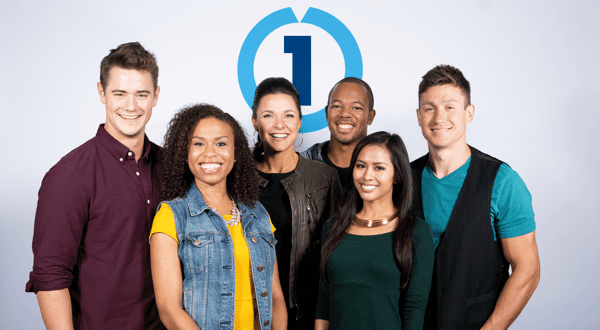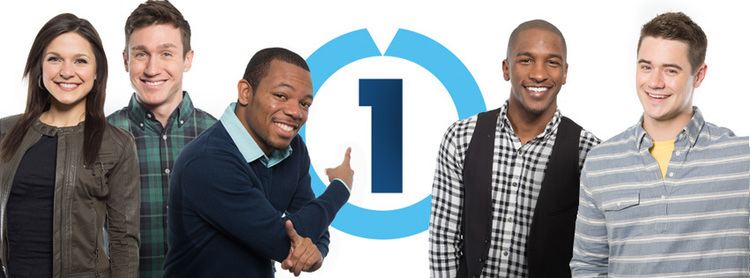5 /10 1 Votes
4/10 IMDb First episode date 1989 Genre Educational television Awards Peabody Award | 6.2/10 TV Network Channel One News Language English | |||||||||||||||||||||||||||||||||
 | ||||||||||||||||||||||||||||||||||
Launched 1989 (pilot program debut)1990 (national debut) Owned by Whittle Communications (1989-1994)PRIMEDIA (1994-2007)Alloy Media+Marketing (2007-2012)ZelnickMedia (2012-May 13, 2014)Houghton Mifflin Harcourt (May 13, 2014-present) Cast Similar CNN Student News, Anderson Cooper 360°, Anderson Live, Our America with Lisa, The Mole Profiles | ||||||||||||||||||||||||||||||||||
Channel One News is a digital content provider. The daily news program has been accompanied by commercial advertising for marketing in schools, with supplementary educational resources. The Peabody and Telly Award-winning Channel One News program is broadcast to approximately 5 million young people in upper elementary schools, middle schools, and high schools across the United States. Channel One News is now also available advertising-free through a subscription. On May 13, 2014, it was sold for an undisclosed price to Houghton Mifflin Harcourt.
Contents
- Channel one news special on massacre in burma
- History
- Business model
- OneVote
- 1992
- 2000
- 2004
- 2008
- 2012
- 2016
- Controversy
- Anchors
- Former
- References

Channel one news special on massacre in burma
History

Channel One was founded in 1989 and began with a pilot program in four high schools before its national rollout in 1990, with original anchors and reporters Ken Rogers, Lynne Blades and Brian Tochi. It was founded by Christopher Whittle, an advertising and marketing executive based in Knoxville, Tennessee. Primedia purchased Channel One for approximately $250 million from Whittle in 1994.

The program's first executive producer, Cynthia Samuels, came to Channel One from 9 years at the Today Show. While at Channel One she created Student Producer Week—during which students produced, reported, directed and designed an entire week of programming—Channel One's one-hour specials including one in Moscow and Ohio, one in Tokyo and Texas, one in Los Angeles after the Rodney King riots hosted by Arsenio Hall and OneVote—an "election night" for students to vote for President and watch the returns come in live from their classrooms.
In December 2007, Channel One's parent company, Primedia, classified its Education Segment, which includes Channel One Network, as a "discontinued operation" and announced that it was "exploring strategic alternatives for" the businesses in that segment. In 2007 PRIMEDIA sold Channel One to Alloy Media and Marketing; on April 23, 2007 Alloy assumed the liabilities of Channel One and took over their assets.
In July 2007, NBC News announced that it would be partnering with Alloy under an arrangement in which NBC would work with Channel One News to produce original content for Channel One’s in-school broadcasts, providing Channel One with access to global newsgathering resources. In 2009, CBS News entered into a partnership with Channel One.
In 2011, Channel One announced it would offer its daily news program and additional educational, Common Core State Standards (CCSS)-based resources through a subscription-based, advertising-free version, in addition to the traditional version.
Channel One was bought by ZelnickMedia in 2012. On May 13, 2014, Channel One was sold for the fourth time, this time to an educational and trade publisher named Houghton Mifflin Harcourt. Houghton Mifflin Harcourt acquisition of Channel One was not considered to be material, meaning the price, if any, was insignificant.
Business model
The original model for Channel One had it providing schools and school districts with televisions, headend units, and satellite receivers. Schools would record the broadcast and transmit it into classrooms. Ads were displayed during the broadcast to cover the costs of the equipment. In 2011, the network began offering a subscription fee to receive an ad-free version of its transmissions.
OneVote
Channel One held mock presidential elections called OneVote shortly before the general elections in 1992, 2000, 2004, 2008 and 2012. With the exception of the 2016 election, each OneVote election has accurately predicted the real presidential election.
1992
The initial vote in 1992 had 3,400,000 participants. Bill Clinton won the 1992 OneVote, garnering 43% of the vote. George H.W. Bush got 27%, with independent H. Ross Perot getting 24% of the vote. In actuality, Clinton won with 43% of the vote (roughly the same as the real election), followed by Bush with 38% and Perot with 19%.
2000
When OneVote returned in 2000, 877,497 students participated, choosing Texas Governor George W. Bush in a mock election with nearly 59% of the vote. Vice-President Al Gore was voted second with 36% of the vote.
2004
The 2004 OneVote gave George W. Bush 55% of the vote. John Kerry finished second with 40% of the vote, while all third-party candidates as a group (voters could only vote for them as a group) got 5%. The vote consisted of 1,400,000 students.
2008
The 2008 OneVote gave Barack Obama 51.5 percent of the vote. John McCain finished second with 48.5 percent.
2012
The 2012 OneVote gave Barack Obama 50 percent of the vote. Mitt Romney finished second with 44 percent.
2016
The 2016 OneVote gave Hillary Clinton 47 percent of the vote. Donald Trump finished second with 41 percent.
Controversy
Channel One has been controversial largely due to the commercial content of the show. Critics claim that it is a problem in classrooms because it forces children to watch ads, wastes class time, and wastes tax dollars. Supporters argue that the ads are necessary to help keep the program running and lease TVs, VCRs and satellite dishes to schools, as well as commercial-free educational video through Channel One Connection. In 2006, the American Academy of Pediatrics reported that research indicated that children who watched Channel One remembered the commercials more than they remembered the news.
Another criticism, noted by Media Education Foundation's documentary Captive Audience, is that very little time is dedicated to actual news, and the majority of the programming is corporate marketing and PR tie-ins to promote products and services, arguing that it further corrupts the school setting with consumerism.
Anchors
Channel One News currently has five anchors/correspondents on its roster.
